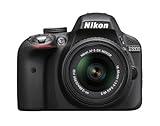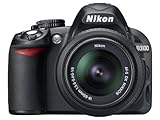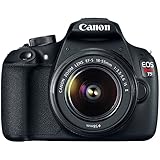(And Always Buy a Used One)

Unless you’re a full-blown professional, DSLR camera bodies and camera lensesshould always be bought used — especially if you’re a newbie shopping for your first entry-level DSLR or a hobbyist replacing your first DSLR.
The truth is, there are few tangible benefits between a used and a new DSLR camera, and the few benefits that do exist are pretty much negligible to everyone but the most advanced or specialized.
So in my eyes, the decision between used and new is one of the most important decisions you could when buying your next camera. I’m here to convince you that used is better. Here’s why.
DSLR Cameras Have Insane Lifespans
When it comes to electronic devices, the usual stigma is that “used” means “diminished in quality, reliability, or lifespan”. This may be true in the general case because many electronics are built with poor craftsmanship, but it isn’t true for modern cameras.
In fact, cameras are so robust that their lifespans aren’t measured in time; rather, life expectancy is measured by something called shutter count. Left alone and undisturbed, a modern DSLR’s lifespan would likely be indefinite — limited only by the availability of a working battery.

The shutter count is a running total of how many shots have been taken by the camera. (Every time a photo is snapped, the camera’s shutter has to actuate. It’s impossible to take a photo without actuating the shutter.) So if you’ve taken 1,000 photos, then your camera’s shutter count would be 1,000.
The rule of thumb is as follows:
- Entry-level DSLRs typically last at least 50,000 shots.
- Mid-level DSLRs typically last at least 100,000 shots.
- Professional DSLRs typically last at least 200,000 shots.
Let’s say you take 10 photos every day for the rest of your life. That comes out to 3,650 shots every year. Even on an average entry-level camera, you can expect the device to last over 13 years. With a professional camera, the expected lifetime would be somewhere in the ballpark of 55 years.
The moral of the story? There’s nothing wrong with buying a used camera because there’s a good chance it will still survive for quite a while.
The good news is that there are tools available to check a camera’s shutter count, which would give you a rough estimate of how much life it has remaining. Warning: These tools aren’t super accurate, but they’re still nice as a gauge.
The Savings Are Phenomenal
Despite the fact that DSLRs have long lifespans, the value of a used camera tends to depreciate quickly. Mainstream camera brands, like Canon and Nikon, put out new camera models at least once every year and this drives down the value of older models.
This means that buying a used camera is noticeably cheaper than a new camera of the same model, and buying a used camera of an older model is drastically cheaper than a new camera of a current model.
That was a mouthful, so allow me to illustrate. Let’s look at two entry-level Nikon DSLRs — the D3300 and the D3100 — and compare the prices of new and used versions of both variants.

Nikon D3300 24.2 MP CMOS Digital SLR with Auto Focus-S DX NIKKOR 18-55mm f/3.5-5.6G VR II Zoom Lens (Black)
24.2 MP CMOS DX-format sensor
Price: $496.95
Price: $496.95
First we have a new Nikon D3300, the latest in Nikon’s line of entry-level DSLRs. This model was released at the start of 2014 and is still the latest model in this camera line even now in late 2015. Buying brand new from Nikon through Amazon means shelling out $500.
But if you look through the list of “Used” versions on Amazon, you see that you can buy it for as low as $375 — and even though it’s technically “used”, the actual camera is rated as “Like New”. You save 25% on the price tag and lose nothing for it.

Nikon D3100 DSLR Camera with 18-55mm f/3.5-5.6 Auto Focus-S Nikkor Zoom Lens (Discontinued by Manufacturer)
14.2 megapixel DX-format CMOS sensor
Price: $349.99
Price: $349.99
And then we have the older brother, the Nikon D3100, which was released back in 2010 but is now discontinued. Despite being the D3300’s predecessor, the D3100 is still a popular camera today and many newbies still end up buying it over the D3300 because it’s significantly cheaper. It’s available for $365 on Amazon.
Hop over to the “Used” section of Amazon and you’ll find a “Like New” version of the D3100 for just $230. How’s that for savings? Over 35% reduction in price just for going used.
Now compare the used D3100 with a new D3300: $230 vs. $500. I rest my case.
Better Models Aren’t Worth the Price
Is there a downside to buying older model cameras? If we’re just talking about one or two generations in the past, then no, there are very few — if any — downsides to buying them. In fact, I firmly believe that newbies and hobbyists shouldn’t even bother with the newest models of any camera line.
Here’s why: camera features are slow to become obsolete. We can illustrate this by comparing the latest two models in Canon’s line of entry-level cameras, the Rebel T5 and the slightly better Rebel SL1.

Canon EOS Rebel T5 EF-S 18-55mm IS II Digital SLR Kit
18 megapixel CMOS (APS-C) sensor with DIGIC 4 image processor
Price: $399.00
Price: $399.00
On paper, here’s what the Canon Rebel T5 has:
- 18 MP APS-C sensor
- 100-12800 ISO range
- 95% viewfinder coverage
- 3-inch LCD screen w/ 460k dot resolution
- Live view on LCD
- 1080p movies at 30 FPS
- Continuous shooting up to 3 FPS

Canon EOS Rebel SL1 Digital SLR with 18-55mm STM Lens
18 MP APS-C CMOS sensor
Price: $499.00
Price: $499.00
And now here’s what the Canon Rebel SL1 has:
- 18 MP APS-C sensor
- 100-25600 ISO range
- 95% viewfinder coverage
- 3-inch LCD screen w/ 1040k dot resolution (touchscreen)
- Live view on LCD
- 1080p movies at 30 FPS
- Continuous shooting up to 4 FPS
- In-camera HDR mode
- External microphone jack
The variant features are bolded above. As you can see, the price difference is noticeable but the Rebel SL1 features aren’t much better than the Rebel T5. You should only get a newer model if it has a specific feature that you absolutely need and cannot live without. Otherwise, settle for something older.
What does this have to do with used cameras? Simple: older models are more likely to have used versions available, and they’re going to be cheaper (for the most part).
Plus, by going with an older model camera, you avoid the pitfalls of being an early adopter and you can benefit from the years of digital camera reviews that are available on the Web.
Cosmetic Defects Are Negligible
One thing that hangs people up when talking about used cameras is the potential for cosmetic defects. When you buy a new camera, you’re guaranteed that it’s going to be fresh, clean, and unmarked. No such guarantees are possible when buying used (unless you can examine the camera yourself).
Here’s the thing, though: cosmetic defects are called “cosmetic” for a reason. Scratches and marks have no impact on the function of the camera body, nor do they affect the final outcome of your photos. The discomfort of a cosmetic defect is psychological. It’s all in your head.
That being said, there are a few defects and issues that you should be aware of when buying a used DSLR.

For example, scratches on the body are fine but scratches on the sensor are bad. Fungus and mold anywhere on or inside the body is bad. Sticky buttons are bad. Corroded connection ports are bad. Dented lens mounts are bad. Anything else is probably fine and worth ignoring.
Whenever possible, buy in person so you can check for these issues. But if that’s not possible, you can still buy online at places like Adorama, B&H Photo, KEH.com, and even Craigslist. Fortunately, DSLRs are one of the few things you can feel safe about buying on Craigslist.
If you go the online route, make sure to heed these tips when buying used camera gear online.
A Few Warnings and Caveats
Hopefully it’s now clear that used DSLRs are the smarter way to go most of the time. But as much as I’m a proponent for buying used, I have to admit that there are a few reasons why you might not want to bite the bullet.
Used sales are often final. This means that you typically can’t return a used DSLR for any reason, which can be risky if you aren’t too knowledgeable on cameras. At least if you buy new from a place like Amazon, you always have a 30-day return policy to fall back on.
Shutter counts aren’t always accurate. Some camera brands are more truthful about shutter counts than others. Some camera models track shutter counts better than others. Some shutter-counting programs are more accurate than others. So while shutter counts can theoretically tell you a camera’s remaining lifespan, take them with a grain of salt.
New cameras can sometimes be cheaper. If you have the time, you can usually find seasonal online promo codes and coupons from manufacturers. Or you can look through online deal websites like FatWallet and SlickDeals. Every once in a while, you’ll find a deal that’s too good to pass up.
When buying camera gear, do you prefer new or used? Are the benefits of a new DSLR worth the extra cost? Share your thoughts with us in the comments below!
Image Credits: Modern DSLR Camera by lightpoet via Shutterstock, Broken Camera Lens by Pan Xunbin via Shutterstock Source: www.makeuseof.com
No comments:
Post a Comment